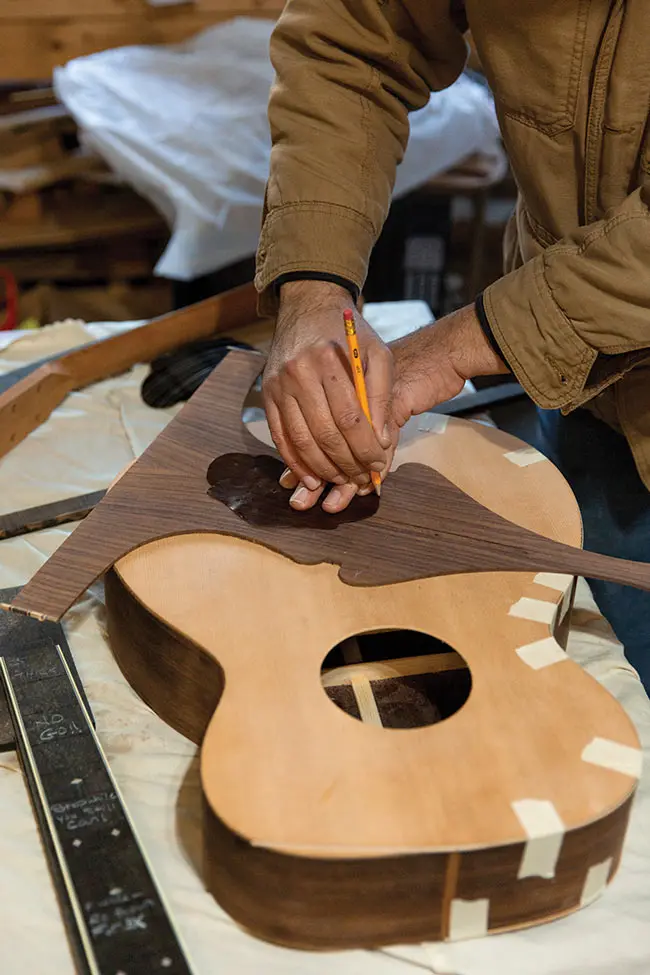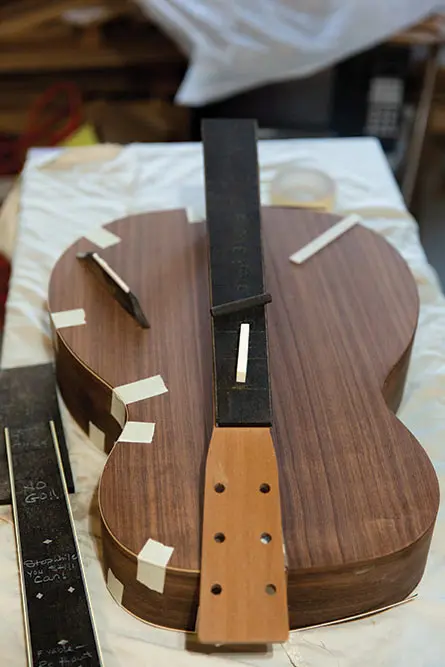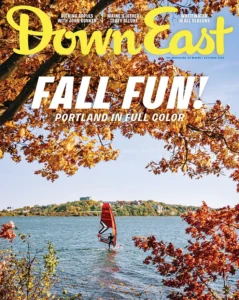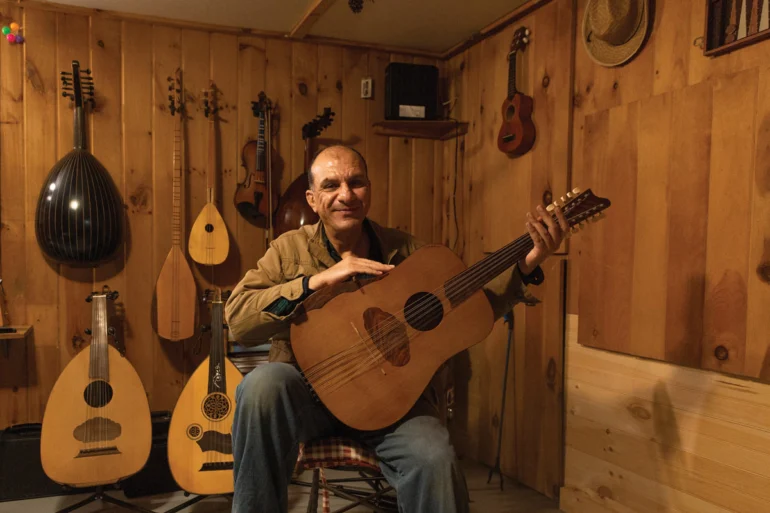As told to Monique Brouillette
Photographed by Sienna Clough
From our February 2022 issue
Back in Baghdad, I made ouds for professional musicians who lived in Iraq, Jordan, and Turkey. I would ask them how they wanted the oud to sound: Did they want it to sound loud or soft? Did they want to feel the vibration of the instrument or not? Depending on how they answered, I would combine different hard and soft woods, like mahogany, rosewood, cedar, or maple, and I always used old, dry pieces, because that gives the oud a better sound.
When I first learned to play, at age 13, I could hear a certain sound in my mind that I wanted my oud to make, but it wouldn’t make it. So I decided to make my own. In 1988, when I was 18, I started an apprenticeship with an oud maker I met through the Baghdad Conservatory, where I learned to play. I spent two years studying how he cut the wood, the straps, and how he made the bridge of the instrument. In 1991, I made my first good oud. I got another teacher and learned how to mix hard and soft woods to change the sound frequencies and intonations.



When I came to Maine as a refugee, in 2016, I started making my Goldeneye Oud, which looks like a guitar. In the U.S., people understand the guitar, but they aren’t familiar with the oud. I designed the Goldeneye to make playing the oud seem more approachable for people here, because it looks like something they know. Although the oud sounds similar to a classical guitar, it feels different. The instruments have the same playing position, but the oud has more strings and doesn’t have frets. And when you hold an oud, you can feel the vibrations along your body from your shoulders to your legs. You can feel a connection with the sound in your belly and chest. So instead of playing it by ear like with a guitar, you play it by following your body.
I call it Goldeneye after the bird, which breeds worldwide. It has no homeland. My instrument is the same — its music has one world. Everywhere.




